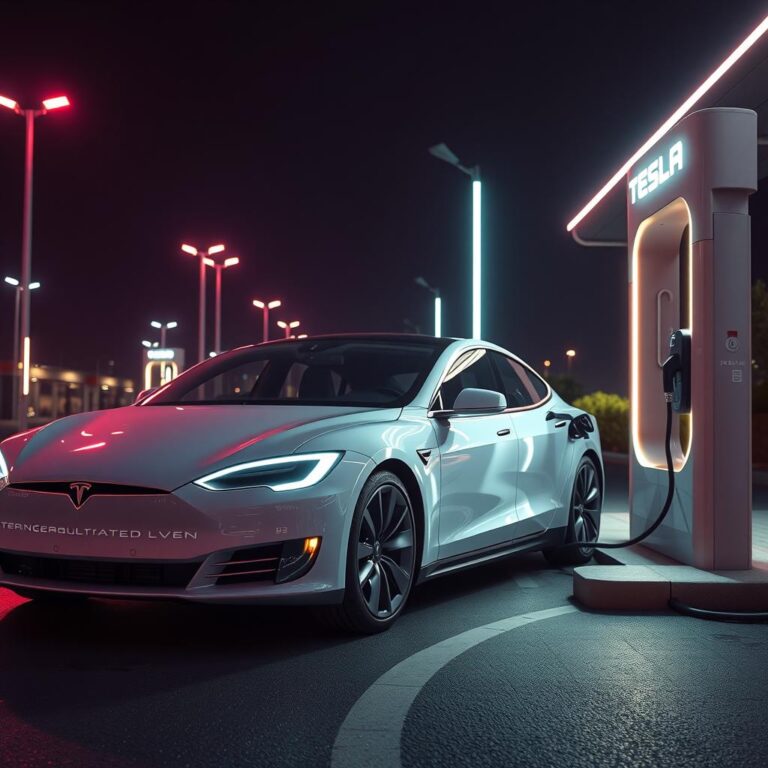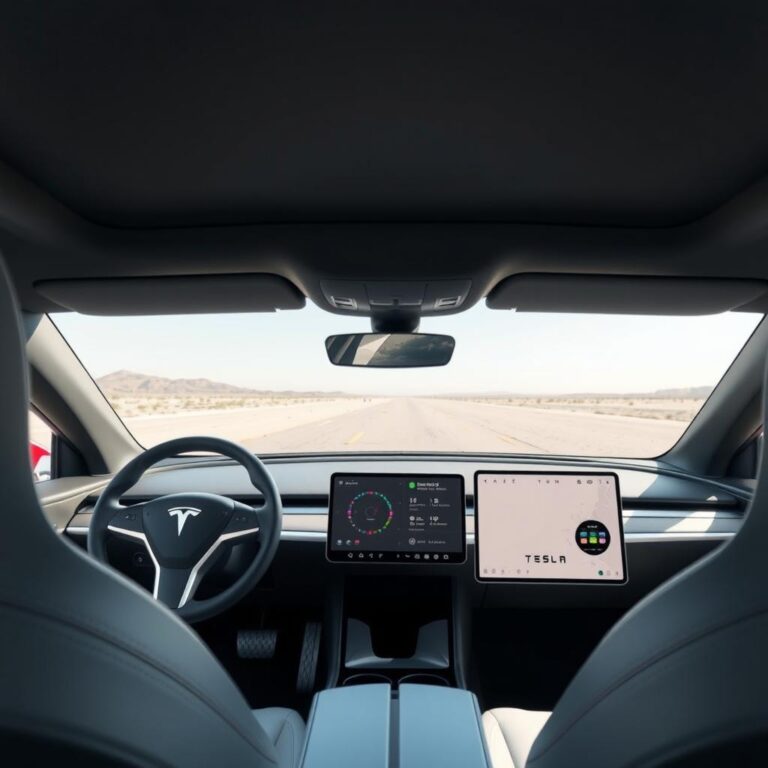Can I Charge My Tesla Car At Home?
Can I Charge My Tesla Car at Home?
If you’re thinking about getting a Tesla, one of the first questions that likely pops up is: “Can I charge my Tesla car at home?” Let’s face it, charging your car at home is a game-changer when it comes to convenience. But, like most things in life, there are some important details you need to know before you plug your car into that socket. Let’s break it down.
Can You Charge a Tesla at Home? Here’s the Answer
Yes, you absolutely can charge your Tesla at home. In fact, most Tesla owners prefer charging their vehicles at home instead of relying on public charging stations. With the right equipment and setup, charging your Tesla can be as simple as plugging it into your wall outlet. But there are a few steps you need to follow to make sure it’s both safe and efficient.
Why Charge Your Tesla at Home?
Charging at home is all about convenience. Imagine waking up every day to a fully charged car. No trips to the gas station, no waiting in line, and no worrying about running out of charge unexpectedly. Plus, it’s typically much cheaper to charge at home than at a public station.
But here’s the thing: charging your Tesla at home does require some planning. Whether you’re using a regular 120-volt outlet or a 240-volt outlet, you need to understand how to maximize the efficiency and safety of your charging setup.
What Do You Need to Charge Your Tesla at Home?
There are a few key things you need to consider before you start charging your Tesla at home. Let’s break them down:
- The Right Charging Equipment – You’ll need the proper charging cable that comes with your Tesla. There are two options for home charging: the Level 1 charger (120V) and the Level 2 charger (240V).
- Electrical Outlet – For Level 1, a standard 120V outlet will do the job. However, for faster charging, you’ll want to use a 240V outlet with a Level 2 charger.
- Dedicated Circuit – It’s recommended to have a dedicated circuit installed for your home charger. This ensures that your car gets the necessary power without overloading your home’s electrical system.
- Charging Station (Optional) – If you want to go all-in, you can install a Tesla Wall Connector. This provides faster charging speeds and can be mounted on your garage wall for easy access.
How Long Does It Take to Charge a Tesla at Home?
The time it takes to charge your Tesla at home depends on a few factors: the type of charger, the size of your battery, and how much charge you need.
If you’re using a Level 1 charger (120V outlet), the charging speed is slower. You can expect about 3 to 5 miles of range per hour of charging. This is perfect for overnight charging if you don’t need to add too much range. For example, if your Tesla’s battery is at 20% and you need 60 miles to get back to full, you’ll need to plug it in overnight for a full charge.
On the other hand, a Level 2 charger (240V outlet) can give you up to 30 miles of range per hour. If you want to charge your Tesla much faster, this is the way to go. With a Level 2 charger, you could potentially fully charge your vehicle overnight (8 to 10 hours).
Do You Need to Upgrade Your Home’s Electrical System?
In most cases, you won’t need to make major upgrades to your home’s electrical system, but there are a few considerations:
- If you’re using a Level 2 charger, you’ll need to ensure that your electrical panel can handle the additional load. This might mean installing a new 240V outlet or upgrading your circuit breakers.
- If you don’t have a dedicated circuit, it’s a good idea to have one installed. This prevents overloading your home’s electrical system and ensures safety while charging your vehicle.
Is Charging Your Tesla at Home Safe?
Charging your Tesla at home is generally very safe, but it’s essential to follow the right procedures. Always use the recommended equipment and ensure your home’s electrical system is up to the task.
If you’re installing a Level 2 charger, it’s a good idea to have a licensed electrician perform the installation. This way, you can rest easy knowing the job was done correctly. Additionally, make sure your charging setup is regularly inspected to avoid any potential issues.
What About Tesla’s Mobile Connector?
If you’re in a pinch and don’t have access to your home charging station, the Tesla Mobile Connector can save the day. This portable charger works with any standard 120V outlet. While it’s not as fast as a Level 2 charger, it’s handy for emergency situations or while traveling.
Costs of Charging Your Tesla at Home
The cost of charging your Tesla at home varies depending on electricity rates in your area. On average, the cost to fully charge a Tesla Model 3 using a Level 2 charger can range from $10 to $15. If you’re using a Level 1 charger, it may cost slightly less, but it will take longer to reach a full charge.
It’s worth noting that charging your Tesla at home is typically much cheaper than refueling a gas-powered car. Over time, you’ll save a significant amount of money, especially if you drive frequently.
Can You Charge Your Tesla at Home Using Solar Power?
Yes! Many Tesla owners choose to charge their vehicles with solar power. If you already have a home solar panel system, you can integrate it with your Tesla charger. This allows you to charge your car using renewable energy, reducing your carbon footprint and cutting down on electricity costs.
To do this, you’ll need to install a solar power system that can generate enough electricity to meet your needs, including charging your Tesla. Tesla offers its own solar panels and energy storage solutions, making it easy to integrate your vehicle with solar power. However, it’s important to do a proper energy audit to make sure your solar system is up to the task.
How to Maximize Charging Efficiency at Home?
Charging at home is all about maximizing efficiency. Here are a few simple tips to help you make the most of your home charging setup:
- Charge During Off-Peak Hours – Many electricity providers offer lower rates during off-peak hours, typically at night. Take advantage of these rates by charging your Tesla overnight.
- Keep Your Battery Between 20% and 80% – To prolong the lifespan of your Tesla’s battery, try not to charge it to 100% all the time. Charging between 20% and 80% is considered optimal.
- Monitor Charging Remotely – Use the Tesla app to monitor your charging status and adjust settings remotely. You can even schedule charging times to ensure you’re charging during off-peak hours.

Frequently Asked Questions About Charging Your Tesla at Home
1. How long will it take to charge my Tesla at home?
The time it takes to charge your Tesla at home depends on the charger you’re using. With a Level 1 charger (120V), it may take anywhere from 24 to 48 hours to fully charge, depending on your Tesla model. However, with a Level 2 charger (240V), it can take 8 to 10 hours for a full charge, which is perfect for overnight charging.
2. Can I charge my Tesla at home with a regular outlet?
Yes, you can charge your Tesla with a standard 120V outlet (Level 1 charger). However, this will be much slower compared to using a 240V outlet (Level 2 charger). If you don’t mind slower charging speeds and only need a small range boost, a regular outlet should work fine for you.
3. Do I need to install a special outlet to charge my Tesla at home?
If you’re using a Level 1 charger, no special outlet is required. However, if you’re looking to charge faster with a Level 2 charger, you will need to have a 240V outlet installed. It’s best to consult with a licensed electrician to ensure the installation is done safely and up to code.
4. How much does it cost to charge a Tesla at home?
The cost of charging your Tesla at home depends on the electricity rates in your area. On average, charging your Tesla will cost between $10 and $15 to fully charge, depending on your vehicle model and the size of the battery. Charging with a Level 1 charger will be a bit cheaper but slower compared to Level 2 charging.
5. Is it cheaper to charge a Tesla at home or at a Supercharger station?
Charging at home is usually cheaper than using Tesla Superchargers. Superchargers tend to have higher rates, and using them frequently can add up over time. Charging at home offers more control over the cost, especially if you’re using off-peak electricity rates.
6. Can I charge my Tesla at home with solar power?
Yes, you can charge your Tesla at home using solar power! Many Tesla owners with solar panels use them to charge their vehicles, which is an eco-friendly and cost-effective solution. To set this up, you’ll need to have enough solar capacity to meet the energy demands of charging your Tesla. Tesla offers solar panel solutions and energy storage options like the Powerwall to make this process easier.
Real-Life Examples of Tesla Owners Charging at Home
Let’s take a look at some real-life stories of Tesla owners who charge their cars at home. These examples will give you a better idea of how it works in practice and what you can expect.
Example 1: Sarah’s Level 1 Charging Setup
Sarah lives in a condo with limited space and no access to a dedicated 240V outlet. She decided to use the standard 120V outlet in her garage to charge her Tesla Model 3. While it takes her about 30 hours to get a full charge, Sarah doesn’t mind since she mostly uses her car for short trips. She plugs it in every night, and by morning, it’s good to go. It works perfectly for her daily commute and occasional errands.
Example 2: Jake’s Upgrade to Level 2 Charging
Jake, on the other hand, needed faster charging. He drives a long distance for work and often has back-to-back meetings, so he opted to install a Level 2 charger at home. After consulting with an electrician, he had a 240V outlet installed in his garage. Now, he can charge his Tesla Model Y in about 8 hours overnight, giving him a full battery every morning. The upgrade was well worth the investment for Jake, who drives a lot each week.
Example 3: Lisa Goes Green with Solar Charging
Lisa wanted to take her environmental commitment a step further, so she installed solar panels on her roof to power her home and charge her Tesla Model S. She also added a Tesla Powerwall to store excess energy generated during the day for use at night. Now, Lisa drives around guilt-free, knowing she’s not only charging her car at home but doing it with renewable energy.
Conclusion: Charging Your Tesla at Home is Convenient and Efficient
So, can you charge your Tesla at home? The answer is a definite yes! Charging at home offers convenience, cost savings, and flexibility. Whether you’re using a Level 1 or Level 2 charger, you have options that can fit your lifestyle and budget. And, if you’re really looking to step it up, you can even integrate solar power into your home charging setup.
Just remember to plan ahead and consider the installation of the necessary equipment. Once everything is set up, charging your Tesla at home will become a seamless part of your routine. So, get ready to say goodbye to gas stations and hello to the future of driving!
Now, go ahead, plug in your Tesla, and enjoy the ride. Charging your Tesla at home isn’t just convenient—it’s one of the best parts of owning an electric vehicle!


